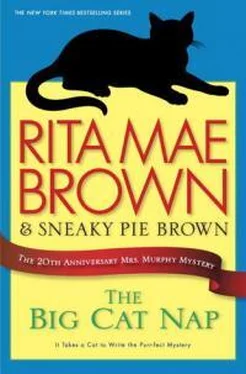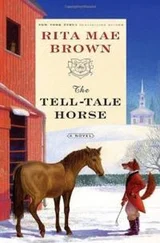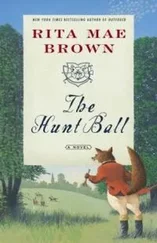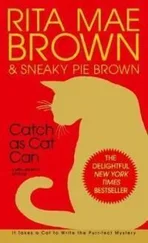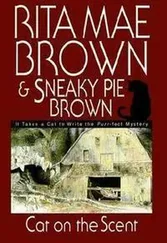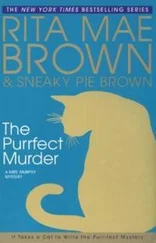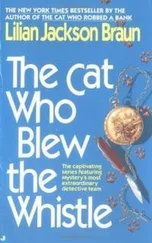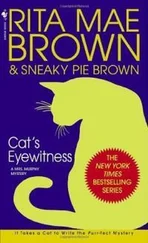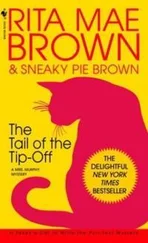She, however, possessed a few maniacal qualities behind the wheel of a heart-throbbing, terrific acceleration machine.
She and her little family climbed to the top of Afton Mountain on Route 250, turned left onto I-64, and drove to Stuarts Draft. Going left off the Fishersville exit, she turned onto a commercial road filled with big metal-box buildings. Haldane’s Salvage was a small brick building. Outside on the chain-link fence was a big sign: RECYCLED CARS, WE GO GREEN. A big stoplight was painted on the sign, with its green light glowing. She pulled in.
Mildred expected Harry, as she’d called ahead. Mildred Haldane also expected the pets, which the kind woman allowed in the office air-conditioning.
Mildred was as round as she was tall, but nevertheless it was with considerable energy that she marched Harry to the huge yard out back. It was bounded by chain link with thin wooden slats inside, the fencing to hide the view of crunched cars, as well as the view of the real cruncher. At the back of the lot, Leyland cypress trees hid some of what many considered an eyesore. Row after row of eyeless trucks, cars, even a few golf carts, greeted Harry. Harry didn’t find the auto graveyard offensive. Some vehicles bore testimony to terrible crashes; others looked tired, with rusting bottoms and paint faded by the sun.
“Don’t get too many people who are interested in salvage,” Mildred rattled on, coral lipstick shining. “My late husband and I started this business in 1972. Not much out here then, so we could buy a lot of land. We figured there’d always be cars and there’d always be collisions. Little did we know that one-car families would become two- and three-car families. We boomed with that.” Mildred swept her arm over the lot. “Fifteen acres.”
“Impressive. You and—”
Before she could finish, Mildred filled in “Drew.”
“You and Drew had vision.”
She shrugged but liked the compliment. “Tell you what, young lady, they don’t build cars like they used to. Come on, let me show you.” Mildred led Harry down to a trim yellow shed, hopped into a new golf cart, and drove Harry to the very back. “Now, this is my antiques graveyard. Drew and I never had the heart to crush them when they’d come in.”
“Look at that!” Harry saw a Plymouth from 1948, then an old Model T Ford—no windshield, no fenders, but unmistakably a Tin Lizzie. A Model A squatted next to the Lizzie. Rolling fenders on Buicks from the fifties were parked next to the old Nashes and old Rancheros, a Ford truck–car combo. They may have been useless, but the design, the bones, gave evidence to the aesthetic of the times.
“Here.” Mildred tapped an old Dodge bumper. “Real steel. Go on, tap it.”
Harry did as she was told. “That could take a bump or two.”
“Tell you what”—Mildred’s eyes squinched up—“I learned more about motors, car design, and safety while taking cars apart—kind of like construction in reverse. It’s true: No fuel injection, simple engines, and the shocks often left a lot to be desired, but these babies were cars. Real cars.”
Harry sighed. “You’re right, Mrs. Haldane. Everything’s been cheapened, and the excuse is making cars lighter so as not to consume so much gas.”
“Call me Millie. Well, if you want to talk about pollution,” Mildred put her hand on a jutting hip, “what about industrial pollution? Plastic, plastic made to look like aluminum, plastic, plastic, plastic. Ugh.” She threw up her hands. “So many alloys in the metals, you can’t call it steel. The public has no idea, no idea at all. Well, I may be a dinosaur, but I lived when the big boys ruled the road, and, honey, it was fab-u-lous.”
Smiling broadly now that she’d expressed herself in no uncertain terms, Mildred motioned Harry back into the golf cart. “You asked about the Explorer. Let me show it to you.”
Within two minutes, they’d pulled up to the SUV.
Mildred climbed out, surprisingly agile given her weight. She bent over, pointing to the wheels.
“Yes, I see it.” Harry viewed the damaged wheels.
“No cracks like that if these wheels were made by Ford. These were made in China. Some are made in other Eastern countries, but China has the ability to crank out lots of cheap stuff. They can fool a lot of people. Here, I can prove this to you without a doubt.”
Back in the cart, Mildred, driving at as fast a clip as the cart could go, pulled up to piles of wheels, a big pile on the left, one on the right.
“Hope no one ever drops a cigarette here.” Harry’s eyes widened.
Mildred laughed. “They’d better be more afraid of me than the fire. Okay, the wheels on the left are genuine parts: on the vehicles when sold from the dealership, or, if replaced, then the driver made sure to duplicate the tires recommended by the carmaker. GM, Ford, BMW, Subaru, Chrysler, Jeep … you get the idea. The ones on the right are knockoffs. Now, let me show you.” The short lady picked up a wheel—not light—without a grunt. “You take it.”
Gingerly, Harry took the proffered wheel, getting as dirty as Mildred in the process.
Neither woman much cared about the rubber smudges or grease. Two motorheads from different generations had found each other.
“Should I put it back on the pile?”
“Yes, indeed.” Mildred picked up a wheel, same size, from the right pile. “Try this.”
The difference in weight, immediately apparent, surprised Harry. “I can’t believe it.”
“Believe it.” Mildred’s coral lips snapped shut. “Now, looking at these two piles, can you tell the difference?”
“No, ma’am, I can’t.”
“Come on.” Mildred pointed to the cart again, and soon they were back in the office. “These are well-behaved animals,” she said, once they’d all settled in.
“Thank you.”
“I’m well behaved. The others are dreadful,” Pewter purred, rubbing against Mildred’s leg.
“Honey, like I said, not too many people are interested in my work here, in how cars are made today. They should be. Their lives depend on it. Now they focus on new models, focus on the makers, but they don’t focus on parts. There are only crash standards for the original manufacturers’ parts. I’m not one for regulation—I think we’re overregulated—but here’s a case where there’s nothing. I can fix your car with a plastic part made to look like metal. Will it hold up in a crash? No.”
“I had no idea, and I love cars. Until you handed me those wheels, I couldn’t have known what you were talking about.”
Mildred grimaced. “It’s like the mortuary industry. People don’t want to think about dying, and they don’t want to think about car wrecks, either. It’s not a part of their daily life until it happens to them.”
Harry nodded.
Mildred scrutinized Harry, then continued, “Here’s the thing, and I go ’round about this. All carmakers want you and me to replace damaged engine parts with their parts, electrical stuff, and so on. They guarantee those parts. Aftermarket parts are a lot cheaper, so people can get their cars repaired cheaper. Some folks would say that’s good because if you use only, say, GM parts, then GM has squeezed out the copycat, so that’s no competition. The consumer loses. I understand that.” Mildred paused for full effect. “But what’s more important: anti-monopoly or your safety? ’Cause I sure can tell you, the Chinese don’t give a fig about your safety, and I’m thinking the insurance companies don’t, either.”
“Why?”
She exploded, “They don’t care about safety and they don’t want to cover big repair bills.”
“Yes,” Harry agreed. “Wow, what a mess.”
“The insurance companies are bleating about consumer choice, the carmakers want to protect their reputations, and maybe they do want to shove out the copycats, but I tell you what, I see poorly made cars; trucks come in here even after stripped and still have blood on them. Gets to me every time.”
Читать дальше
